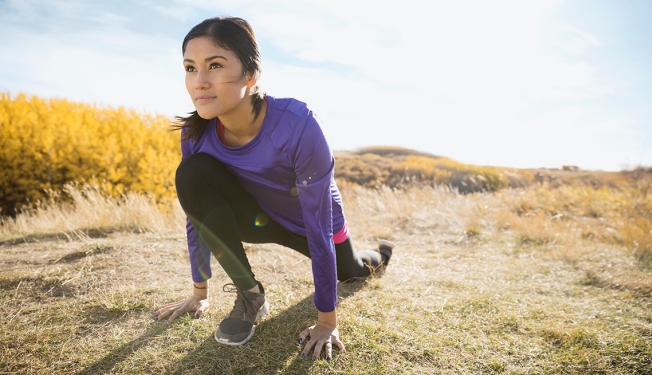originally from aarp.com by Amy Paturel
7 surprising ways to increase density

Get Stronger
By the time we reach 50, both men and women are losing bone mass, thanks to a slowdown in the body’s bone-rebuilding process. Diet and lack of exercise can also play a role. Women can lose up to 5 percent of their bone mass in the first six years following menopause, thanks to a loss of estrogen, says Chad Deal, M.D., head of the Center for Osteoporosis and Metabolic Bone Disease at the Cleveland Clinic. That means women can lose more than 20 percent of bone density in less than a decade with complications ranging from osteoporosis to fractures and falls.
Good news: You can reduce this threat by developing the following bone-strengthening habits.
Soak up some sun
Vitamin D is a critical bone-building nutrient. It improves absorption of calcium from the gut, helps increase bone density and enhances muscle function, reducing the risk of falls and fractures. Trouble is, it’s tough to get adequate D from food alone. A glass of milk supplies only about 100 international units (IUs), but the Institute of Medicine’s most recent recommendations call for 600 IUs daily. The solution: 15 minutes in the sun. That’s all you need to make enough vitamin D for your body, while avoiding the risk of skin cancer.
Jump for joy
Not a fan of running or jogging? Try something from your childhood — jumping up and down. Jumping 10 or 20 times, twice a day, for four months increased hip bone density in women ages 25 to 50, reports a study in the American Journal of Health Promotion. Why? Bones respond to stress by becoming denser and stronger. “The more impact on your bones, the better,” says E. Michael Lewiecki, M.D., director of the New Mexico Clinical Research & Osteoporosis Center. Keep in mind, however, that the study was done on women without osteoporosis and that they jumped without shoes for greater impact. Jumping may not be recommended for women with osteoporosis whose bones are already weak.
Eat your veggies
Your mother was right — you should eat your vegetables. Especially dark, leafy greens, such as collards, kale, spinach and bok choy, which are good sources of calcium, as well as bone-building nutrients such as potassium, magnesium and vitamin K. A 2015 study published in the Journal of Bone and Mineral Research found that people ages 45 to 83 who shunned plant foods had an 88 percent higher rate of hip fracture compared with those who ate the recommended five servings of fruits and vegetables daily.
Have a little alcohol
People who drink moderately — no more than one drink a day for women, two for men — have higher bone density than nondrinkers or heavy drinkers, recent studies have found. Beer may be particularly helpful because it contains dietary silicon, a nutrient vital for bone strength — but stick to one or two drinks. More than that can weaken bone-building cells, Deal says.
Eat prunes
Don’t laugh. Several studies have shown that regularly eating dried plums (aka prunes) is good for your bones. Most recently, a 2016 study published in Osteoporosis International reported that eating as few as five dried plums daily for six months helped prevent bone loss in older postmenopausal women with low bone density. Lewiecki suspects it’s because prunes are rich in nutrients needed for bone health, including magnesium, potassium, vitamin K and boron. Start with two to three prunes daily, and gradually work your way up to five or six per day to allow your gut to adjust to this fiber-dense fruit.
Go easy on bread and grains
A diet high in grains and bread may be bad for your bones. Research from Tufts University suggests the sulfur compounds in grains can increase the body’s acidity and trigger bone loss. To get the most bang for your bone-building buck, don’t go overboard on grains; focus instead on adding more fruits and vegetables to your diet, which can counteract acidity.
Get more sleep
Adults age 50-plus who sleep less than six hours a night have a higher risk of osteoporosis, says a 2015 study published in the Journal of the American Geriatrics Society. More research is needed to understand the relationship between sleep and bone health, but insufficient shuteye could impact our bones’ ability to repair themselves as we sleep. “The body’s natural rhythms can be disrupted by lack of sleep and that could, in turn, affect bone metabolism,” Lewiecki says.



























